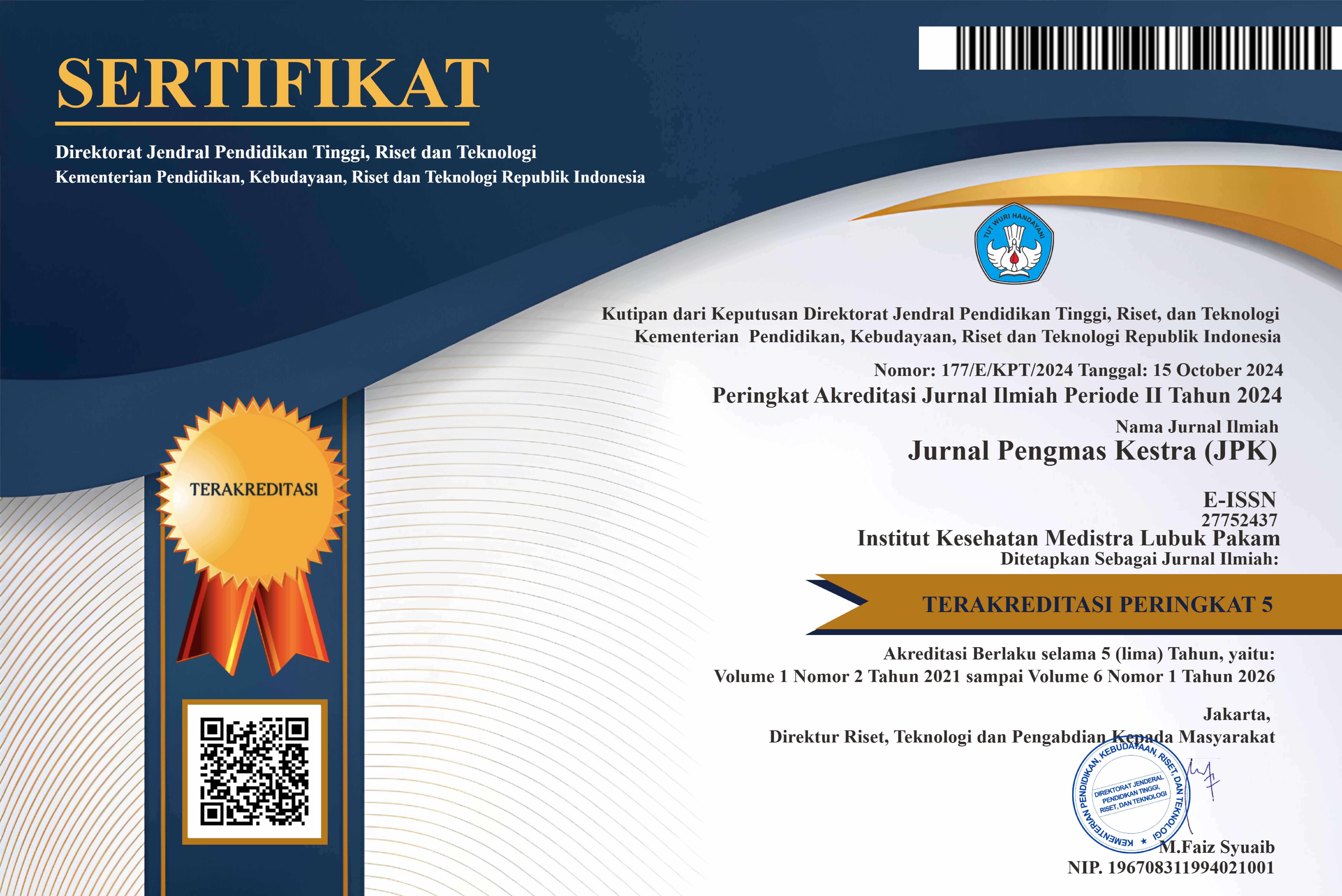SOCIALIZATION OF THE USE OF ANTIHYPERTENSIVE DRUGS IN THE INPATIENT INSTALLATION OF GRANDMED HOSPITAL LUBUK PAKAM
DOI:
https://doi.org/10.35451/jpk.v2i1.1160Keywords:
Hypertension, Antihypertensive drugs, Evaluation of drug use, HospitalAbstract
Hypertension is a chronic disease that is one of the causes of death in the world. Every year these cases are constantly increasing. It is estimated that by 2025 it is predicted that around 29% of the world's population will be affected by hypertension. WHO mentioned that in some developing economies it is around 40% while developed countries are 35% lower. Indonesia occupies an incidence percentage of 32% of the total population. Patients are often unaware of the rise in blood pressure before a physical examination is performed. In addition, patients suffering from this disease also have the potential for complications with other diseases. The high prevalence of cases causes the use of antihypertensive drugs to increase. Along with this, there are many cases of irrationality of treatment. Therefore, optimal therapy is needed in dealing with this disease so that we can suppress the incidence rate and the quality of life of patients can increase. Evaluation of the accuracy of the use of this drug is very necessary considering that it is very closely influential with the quality of life of the patient. Research has been conducted to see whether or not the rational use of hypertension drugs in hospitals has been carried out. Grandmed based on several criteria, namely the right patient, indications, medications, and the right dosage. The data is taken from the patient's medical record. Of the 36 obtained exactly 100% patients, the right indication 100%, the right drug 86% , and the exact dose 94%. This socialization is mainly aimed at pharmacy students so that it can be developed as a reference in hypertension therapy in the future.
Downloads
Published
Issue
Section
License
Copyright (c) 2022 JURNAL PENGMAS KESTRA (JPK)

This work is licensed under a Creative Commons Attribution 4.0 International License.
Copyright in each article is the property of the Author.




















